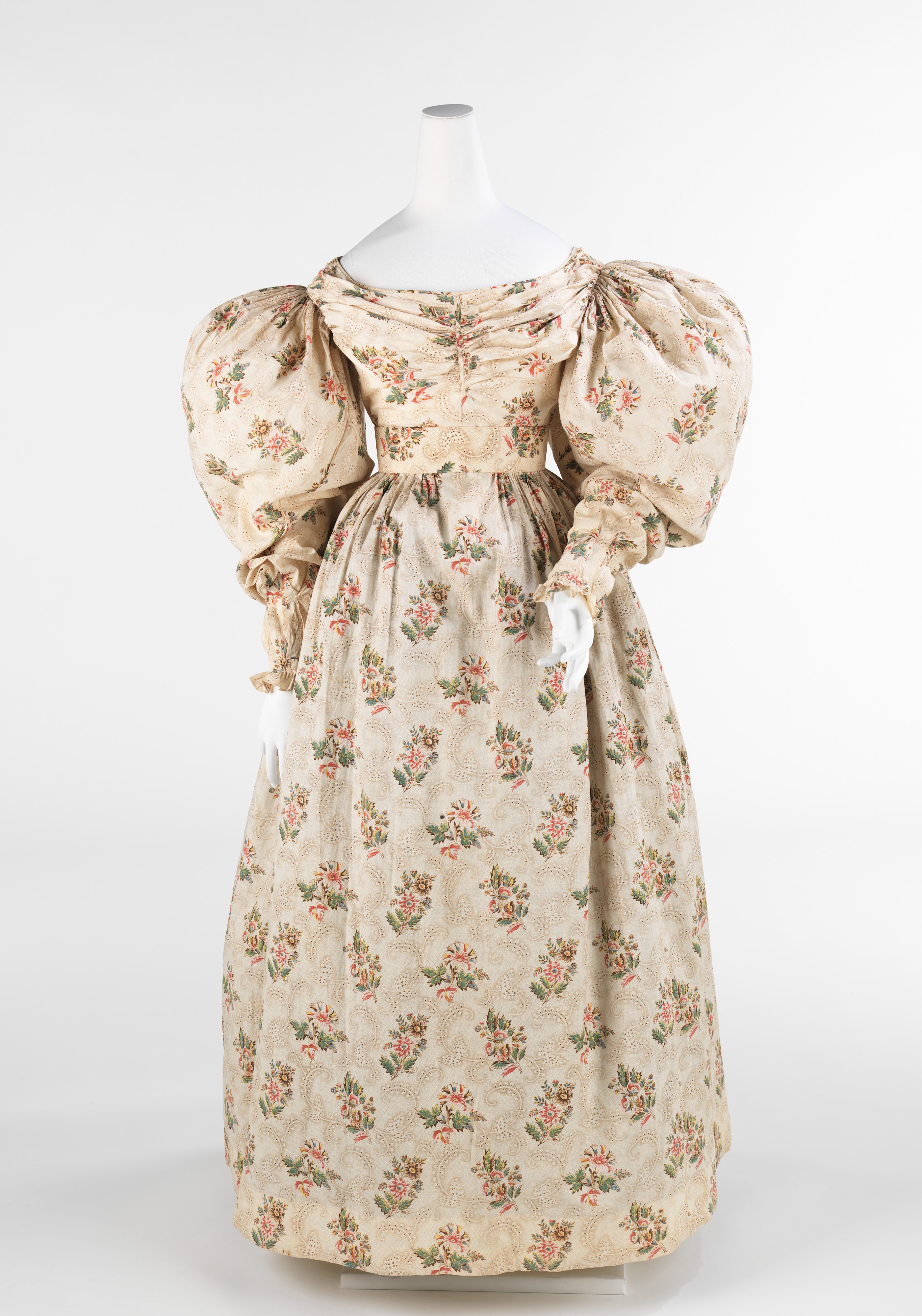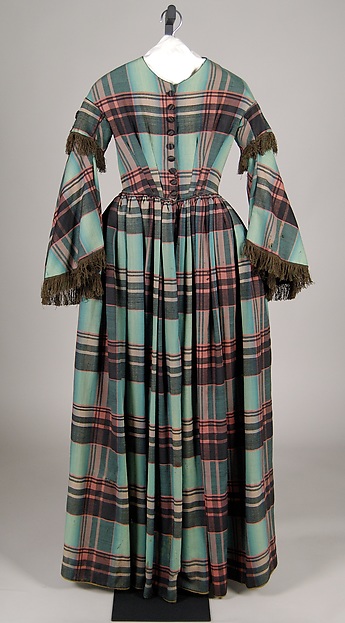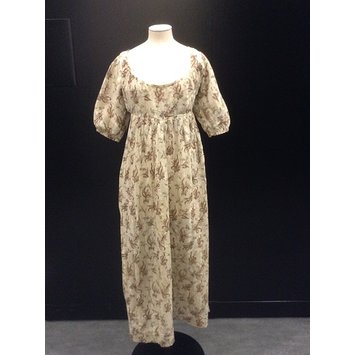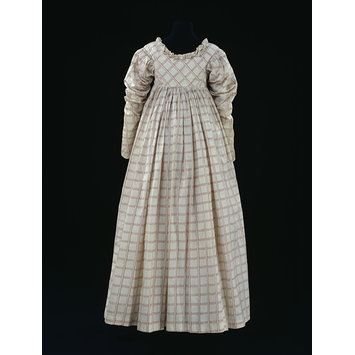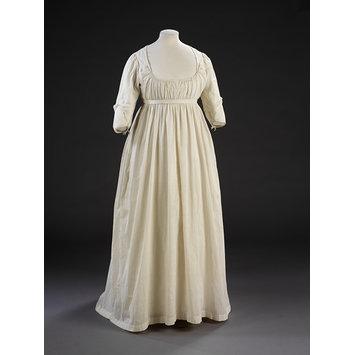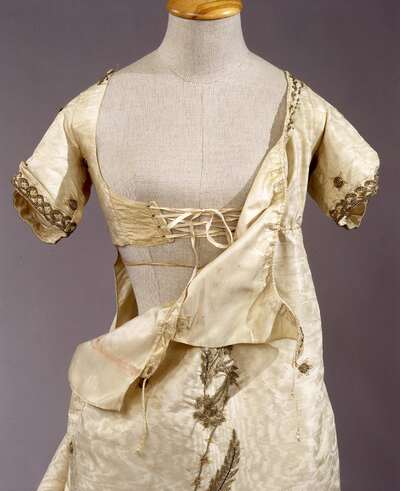And now for the final dress from railroad living history day: my 1873 printed cotton. My character, Mrs. Mary Ann Montgomery, was living in railroad camps on the frontier, and recounting her travel exploits by train, boat and horseback, so I wanted to give her an identifiable 1870s outfit, which would also be practical and washable by the standards of the time.
A dark calico in a fun pattern seemed just about right.
I previously posted some of the original garments I consulted for this design, as well as the corset, bustle pad and petticoat used to give it its shape.
As previously noted on the petticoat, I used the gored skirt instructions from The Complete Dressmaker (1875). The bodice and sleeve are draped, using my 1850s methods out of The Dressmaker's Guide, but with an eye towards the bodice shapes shown in The Complete Dressmaker. The upper skirt/tunic is taken from an original in Patterns of Fashion II.
 |
More bustled overskirt, because it's my favorite part of the dress.
|
Although it's the same pattern as the en tablier over-skirt from 1865 Lincoln Funeral dress, I handled the overskirt a bit differently. Last time, I gathered it vertically along the seams to get that mid-1860s 'swag' effect. For a more 1870s bustle, I followed the original shaping this time: the back lengths have three pleats in the side seam that joins the front, and then a series of five tapes at tacked at key points one the back width and then attached at the waist.
 |
The secret to cool bustle effects: tacking things to twill tape.
|
This whole dress is in two pieces: the gored underskirt is set into its own waistband (flat along the front gore, pleated in the back), and overskirt is joined directly onto the bodice's waistband.
I technically did not put fasteners on the bodice, but instead used pins to close it.. After recent difficulties with my brown 1850s calico, I'm not feeling charitable towards books-and-eyes, so the pins will stay for now. Instead, my alteration priority is to add a pocket.
















